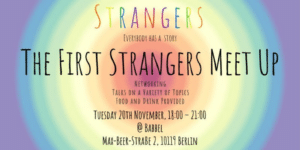Teamwork has been identified as the most in-demand skill for 2024. In this post, we introduce the Myers-Briggs personality types and explore how understanding the different personalities within your team can result in more effective teamwork.
They say teamwork makes the dream work, and this could not be more true in 2024 and beyond. Even if you believe that your own team is a well-oiled machine, it’s essential to continuously review and optimize how your team works together.
And we’re not just talking about one-size-fits-all training programs or shiny new tools and processes. If you really want to build and nurture a winning team, you need to understand all the different personality types at play. From there, you can implement strategies and structures that truly empower teamwork. And we’ll show you how in this guide.
Discover how our solutions cater to different industries!
Visit our Industry page to learn how we can meet your specific needs.
Teamwork Will Be More Important Than Ever in 2024
Teamwork has always been recognized as an important workplace skill. Most jobs incorporate an element of collaboration, and every organization requires at least some degree of interpersonal communication. Beyond that, teamwork has long been hailed as the key to innovation, more effective problem-solving, and even individual growth.
In 2024, teamwork will play an even more critical role. It’s been cited as the most in-demand skill for 2024, closely followed by communication. And, with the continued rise and projected growth of remote work, teamwork will be a major distinguishing factor between successful remote teams who remain connected and those who flounder and fragment.
Another trend highlighting the importance of teamwork is the slow but certain shift away from ‘a great resignation where talent had plenty of choice to a situation where redundancies and hiring freezes are becoming more and more common’ (HR Trends & Predictions for 2024).
In such a climate, it’s more important than ever to ensure that your team is working to their full potential. Employers and managers will need to look to their existing teams to address skills gaps, rather than bringing additional talent on board. This requires understanding the distribution of strengths and weaknesses within your team and focusing your upskilling, reskilling, and team training efforts accordingly. Understanding the different personality types that make up your team (and their associated strengths and weaknesses) will make this considerably easier.
Ultimately, strong teamwork contributes to a productive workplace where people can rely on each other to get things done. It fosters an environment of support, learning and growth, efficiency, and innovation. All extremely valuable in the modern world of work!
Want to learn more about setting your team up for success? Discover Employee Development 2.0: The New Way to Upskill Your Employees.
Why Understanding Personality Types Is Crucial to Unlocking Your Team’s Full Potential
When you picture the most effective, productive, and contented team you’ve ever been a part of (or witnessed in action), what would you say is the secret ingredient to that team’s success? Is it the skills of each individual on the team, or is it that team’s ability to work well as a cohesive unit?
In reality, building a high-performing team isn’t just about bringing together a group of people who have the right hard skills and job-related expertise. It also depends on how those individuals work together. It depends on how they communicate, collaborate, and navigate team dynamics to overcome challenges, get results, and move forward as a group.
A team’s ability to perform depends on teamwork, and teamwork depends on team dynamics. And guess what? Team dynamics are shaped by the different personalities on the team.
Personality profiling is used by employers to build up a profile of each employee’s most dominant traits, characteristics, strengths, weaknesses, values, and preferred ways of working. This can be extremely valuable when it comes to understanding your team and supporting them to reach their full potential.
Understanding different personality types at work facilitates effective teamwork by:
- Creating self-awareness at the individual level. Personality profiling can help individual employees to understand themselves better and to develop an awareness of how their own personality type might influence team dynamics.
- Building empathy for others. In addition to understanding their own personality type, individuals will also be better equipped to recognize and understand other personality types within the team. They can anticipate how others might prefer to approach certain tasks, and more readily comprehend different perspectives and viewpoints. This creates empathy and open-mindedness, which paves the way for more respectful, productive collaboration.
- Fostering better communication and reducing conflict. When people are able to understand each other and accept that not everyone’s way of working is the same as their own, it’s much easier to avoid miscommunication, misinterpretation, and conflict. When misunderstandings and disagreements are reduced, progress can prevail.
- Empowering managers to understand their team as a whole and distribute responsibilities for optimal results. With personality profiling, managers get a clear overview of the ‘DNA’ that makes up their entire team. It’s like a map showing them exactly where different strengths, weaknesses, and preferences are located. This empowers them to assign tasks and responsibilities accordingly, select the most suitable leaders for different initiatives, and to understand what kind of working style and support are needed for each individual to perform at their best.

An Introduction to the Myers-Briggs Personality Types
The Myers-Briggs Personality Type Indicator (MBTI) is a self-report questionnaire which was developed by Isabel Myers and Katherine Briggs, based on Carl Jung’s theory of personality types.
The MBTI contains a series of questions that individuals answer about themselves. Their answers are thought to reveal insight into their personality type, strengths, and preferences, resulting in the allocation of an overall personality type (with a possible 16 personality types in total).
The Myers-Briggs questionnaire comprises four different scales:
- Extraversion (E) and Introversion (I): This relates to how people interact with the world around them. Extraverted individuals may be more action-driven, while introverted individuals may be more thought-oriented.
- Sensing (S) and Intuition (N): This relates to how people gather information. Those who lean towards the ‘sensing’ end of the scale tend to focus on facts, details, and their reality, while intuiters tend to focus more on patterns, possibilities, and abstract concepts.
- Thinking (T) and Feeling (F): This relates to how people make decisions. People who tend towards thinking are more influenced by facts and objective data, while those who tend towards feeling are more influenced by people and emotions.
- Judging (J) and Perceiving (P): This relates to how people deal with the outside world. The ‘judging’ end of the scale indicates a preference for structure and clear decisions, while the ‘perceiving’ end of the scale is associated with more openness, flexibility, and adaptability.
Each personality type is represented by a four-letter code, indicating which side of each scale is more dominant for the individual. You’ll find an overview of all the different Myers-Briggs personality types here.
Understanding Personality Types Within Your Team
The different Myers-Briggs personality types can be an excellent tool for getting to know your team and understanding how each individual colleague interacts with others, how they learn and acquire information, how they make decisions, and what they prefer in terms of working environment and structure. This allows you to expertly navigate team dynamics and ensure that everybody has what they need to succeed—both individually and as a team.
Getting started with personality types is actually quite simple. You might begin by asking each member of your team to complete a Myers-Briggs-inspired personality questionnaire—this one provided by 16personalities is free and only takes about 15 minutes from start to finish.
Besides individual personality tests, there are also numerous tools out there for evaluating your team as a whole, as well as resources to help you act on the insights you uncover and, in turn, unlock your team’s full potential.
As you introduce your team to the different personality types, be sure to emphasize the point that no one personality type is better than another. Personality types should be used as a tool to cultivate understanding—not as a way to position certain personalities and ways of working as superior to others.

Ready to see our solutions in action?
Schedule your personalized demo today and discover how we can elevate your team’s learning experience!







